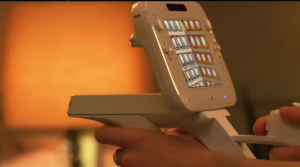Just curious but what kind of improvements will the extra ram allow for? Like better textures or what? I'm not very knowledgeable when it comes to tech.

Already answered, but it's more memory to store things.
Of course, everything needs to be stored in software, so it allows for more or better geometry (polygons/scene complexity), animations, textures, audio, even processing more things.
It doesn't allow the data to be processed faster though, that's up to the processing units so a size bump doesn't typically allow for doing stuff faster, at most doing/storing more stuff/detail. A speed bump might allow for effectivelly feeding more data to the processing units, but then again they'll take the same time dealing with it as they did before.
Of course, this is a simplistic approach to things, RAM performance matters because you have refresh cycles (in which the RAM contents are not available), so it needs to be clocked accordingly with cpu/gpu/front side bus speed and have a good bandwidth (bandwidth being measured by how many data it can transfer per second) otherwise it'll act as a bottleneck which is precisely what you don't want to happen.
Lack of RAM can also take us to extreme situations were compression or difficulty caching hampers the way the game runs (either making it pause/slowdown when loading, having to have divided levels or loadings between areas or even causing texture pop-up when circumventing them), because by having to process more data than the memory bank can take at once or feeding compressed data that needs to be decompressed in order to be used introducing an extra step is hardly ideal.
A good idea of what extra RAM can mean for a system is probably the difference from expansion pack enabled N64 games running with the extra RAM (never meant more framerate, really) and the improvement from GC to the Wii (even though it was faster) was effectively more RAM.
Super Mario Galaxy was originally shown running on GC's after all; Metroid Prime 3 too.
Before:
After:
Different planet/galaxy, but you get the idea.
Also this:
Todd Keller: "You can ask any artist here what the first 'Prime' was about and they'll say cracks. All we did was put thousands of cracks everywhere. For some reason at the time I was real big into cracks and everything had to be beveled. Every crack was custom. There is not one crack that was copied around. I made them chop up everything. We chopped up every stone that was unique on the game. Every pebble." So what is "Prime 3" about? "Texture detail." In the Wii game, every texture — the flat pieces of art that coat every side of every figure, object and piece of terrain in any 3-D game — was handmade, ideally at 512 pixels wide, double the resolution of textures in the two earlier "Prime" games.
Not only is he proud of the level of detail his art team achieved, but the amount of variety in the game. Consider the mushrooms that appear in the "Prime 3" jungle planet. "All those mushrooms in the Bryyo world — those big, spiky mushrooms — those aren't really copied around at all, they're kind of made new each time, just because we didn't want the mushrooms to be similar. We would take all the vertices and move them different places or extrude, pull out new polygons to make the mushrooms fit into the hill differently. When we get closer to [the toxic energy called] Phazon they are a little more corrupted."
What his team did for mushrooms they tried to do for everything in the game, from the enemies to the chambers on each of the game's planets. "Our focus is to make every room its own custom stage," Keller said. "We think it's up to us to present something that's very high-quality for the player to enjoy. We don't want to copy our own rooms or textures if we can. Because we want it to be new for you every time you walk in one of those doors."
Source:
http://www.mtv.com/news/articles/1570214/metroid-prime-developers-on-pushing-wii.jhtml
That's the benefits of more RAM (and of course, good artistry).
USB 3 would be nice but is hardly necessary. A USB 2.0 hard drive will probably hit about 30 mega bytes per second peak. A 4x blu-ray drive will read at 18 mega bytes per second. That leaves plenty of overhead when streaming data from an external hard drive. I don't think USB 2.0 will affect gameplay much if it all. If anything playing a game installed to an external hard drive will be slightly faster than reading it from the optical drive.
Probably way faster, even if the bandwidth for it isn't that much higher, the seek time is. Specially if it's an SSD.





